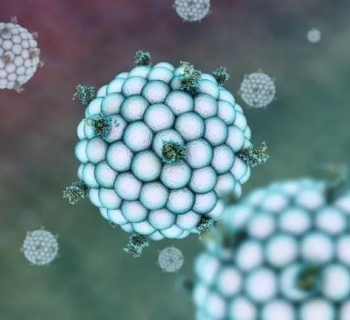Nanoparticles are microscopic particles smaller than 100 nanometers, possessing unique properties such as colloids, optics, and electronics, and are widely used in fields such as medicine, cosmetics, and industry. However, its small size and strong permeability may bring health risks, so its safety needs further study. Nanoparticles have enormous potential, but their risks must be carefully evaluated. With the development of nanotechnology, their research and application will become more widespread.
1. Small size effect: When the size of nanoparticles is equivalent to or smaller than the physical characteristic size of light wave wavelength, de Broglie wavelength, and coherence length or transmission depth of superconducting states, the periodic boundary conditions of crystals will be disrupted, and the surface layer of amorphous nanoparticles will have a reduced atomic density, leading to new small size effects in acoustic, optical, electrical, magnetic, thermal, mechanical and other properties.
2. Surface effect: The ratio of surface area to volume of nanoparticles significantly increases with the decrease of particle size, increasing the number of atoms located on the surface, insufficient atomic coordination, and high surface energy, making these surface atoms highly active, highly unstable, and easily bound to other nanoparticles. This surface effect provides abundant surface atoms for nanoparticles, making them highly active catalysts for chemical reactions.
3. Quantum size effect: When the size of nanoparticles decreases to a specific range, the electronic energy levels inside the metal will transition from an approximately continuous state to discrete energy levels, while nano semiconductor particles exhibit discontinuous the highest occupied molecular orbital and the lowest unoccupied molecular orbital energy levels, leading to a widening of the energy gap. This phenomenon is called the quantum size effect. This effect leads to significant magnetic, optical, acoustic, thermal, electrical, and superconductivity differences between nanoparticles and macroscopic objects.
4. Macro quantum tunneling effect: The ability of microscopic particles to penetrate potential barriers is called the tunneling effect. Recently, it has been discovered that some macroscopic quantities, for example, the magnetization of microparticles and the magnetic flux in quantum coherent devices, also exhibit tunneling effects. They can cross the potential barriers of macroscopic systems and change, hence the term macroscopic quantum tunneling effect.
1.Medical field:
Drug delivery: Nanoparticles can support drugs, accurately delivering drugs to the affected area, uplifting the therapeutic effect of drugs, and reducing side effects.
Diagnosis: Nanoparticles can be used in imaging techniques such as MRI and CT scans to provide more accurate diagnostic information.
Cancer treatment: Certain nanoparticles can kill cancer cells or trigger immune responses to combat cancer.

Nanoparticles can serve as drug carriers to accurately deliver drugs to the lesion site
2.Industrial sector:
Coatings and pigments: Nanoparticles can enhance coatings' durability, gloss, and color strength.
Catalyst: Nanoparticles can serve as catalysts for chemical reactions, improving reaction speed and efficiency.
Sensors: Nanoparticles can manufacture highly sensitive sensors for detecting gases, temperature, pressure, etc.

Nanoparticles can be used to manufacture highly sensitive sensors
3.Energy sector:
Solar cells: Nanoparticles can improve the photovoltaic conversion efficiency of solar cells.
Energy storage materials: Nanoparticles can manufacture high-performance batteries and supercapacitors for storing and releasing large amounts of energy.

Nanoparticles can improve the photoelectric conversion efficiency of solar cells
4.Consumer goods sector:
Cosmetics: Nanoparticles can be used to manufacture sunscreen, skin care products, etc., to improve the effectiveness and durability of products.
Textiles: Nanoparticles can enhance fabrics' waterproof, antibacterial, and anti-static properties.

Company Profile
NANOTRUN(www.rboschco.com) is a trusted global chemical material supplier & manufacturer with over 12-year-experience in providing super high-quality chemicals and nanomaterials, including Nanoparticles, nitride powder, graphite powder, sulfide powder, 3D printing powder, etc.
The company has a professional technical department and Quality Supervision Department, a well-equipped laboratory, and equipped with advanced testing equipment and after-sales customer service center.
If you are looking for high-quality Nanoparticles, please feel free to contact us or click on the needed products to send an inquiry.
Payment Term
L/C, T/T, Western Union, Paypal, Credit Card etc.

Shipment Term
By sea, by air, by express, as customers request.
Storage Conditions:
1. Prevent agglomeration: Nanoparticles are prone to accumulation due to their small size and high surface energy. Aggregation can alter nanoparticles' physical and chemical properties, so it is important to minimize the occurrence of aggregation during storage. A common method is to use surfactants or stabilizers to prevent aggregation.
2. Choose a suitable container: Nanoparticles should be stored in sealed, lightproof, and waterproof containers to prevent them from coming into contact with oxygen, moisture, or other pollutants in the air. For certain specific nanoparticles, such as silicon nanoparticles, it is also necessary to consider avoiding contact with carbon dioxide.
3. Control temperature and humidity: Temperature and humidity significantly impact the stability of nanoparticles. Generally speaking, a low temperature and humidity environment is conducive to maintaining the stability of nanoparticles. Therefore, it is recommended to store nanoparticles in a low-temperature, dry environment.
4. Avoid prolonged exposure: Some nanoparticles, such as nickel-cobalt nanoparticles, are easily affected by oxygen and moisture in the air, leading to surface oxidation or aggregation. Therefore, it is suggested to avoid prolonged exposure to the air as much as possible.
5. Marking and recording: The container for storing nanoparticles should be marked, including the name of the nanoparticles, storage date, and any special storage conditions. In addition, changes in storage conditions should be regularly recorded to ensure the stability of nanoparticles.
Q1
How does the size of nanoparticles affect their physical and chemical properties?
Re:The size of nanoparticles significantly impacts their physical and chemical properties. As the size decreases, nanoparticles exhibit unique colloidal, optical, and electrical properties. Due to the small size effect, nanoparticles have a large specific surface area and high surface energy, which makes them highly chemically active. In addition, nanoparticles also exhibit quantum size effects, meaning that their electronic structure changes, leading to band structure changes and different optoelectronic properties from macroscopic materials. These unique properties make nanoparticles have broad application potential in multiple fields.
Q2
How can nanoparticles be used for drug delivery, diagnosis, and treatment in the medical field?
Re:In medicine, nanoparticles have shown enormous potential in drug delivery, diagnosis, and treatment due to their small size and special properties. Nanoparticles can serve as drug carriers, achieving targeted drug delivery by precisely controlling drug release, improving therapeutic efficacy, and reducing side effects. In addition, nanoparticles can be used for medical imaging, such as MRI and optical imaging, to improve image resolution and contrast. Meanwhile, nanoparticles can also be used for early diagnosis and remedy diseases, such as targeted therapy and biomarkers for cancer.
Q3
Is the application of nanoparticles in cosmetics safe?
Re:The safety of the application of nanoparticles in cosmetics is a highly concerned issue. Although nanoparticles have certain advantages in cosmetics, such as improving product stability and permeability, their safety still requires in-depth research and evaluation. There is still some controversy and uncertainty regarding the safety of nanoparticles in cosmetics. Therefore, when using cosmetics containing nanoparticles, consumers should choose carefully and pay attention to the ingredients and safety information of the product.
Q4
What are the potential effects of applying nanoparticles in cosmetics on the skin?
Re:Applying nanoparticles in cosmetics may have some potential effects on the skin. On the one hand, nanoparticles' small size and strong permeability may make it easier for them to penetrate deep into the skin, thereby exerting their effects. However, this may also increase the risk of causing skin irritation, allergies, or other adverse reactions. On the other hand, nanoparticles may also interact with other components in the skin, affecting the structure and function of the skin. Therefore, when using cosmetics containing nanoparticles, paying attention to their potential impact on the skin and conducting appropriate skin testing and evaluation is necessary.
Q5
How do nanoparticle preparation and characterization techniques affect their performance and application?
Re:The preparation and characterization techniques of nanoparticles significantly impact their properties and applications. The selection and control of preparation techniques directly affect nanoparticle size, morphology, structure, and purity. Different preparation methods may yield nanoparticles with different properties, affecting their application effectiveness in various fields. Meanwhile, characterization techniques are also a key means of evaluating the performance and application of nanoparticles. The structure, properties, and functional information of nanoparticles can be obtained through precise characterization techniques, providing the scientific basis for their application. Therefore, continuously developing and improving nanoparticles' preparation and characterization techniques is of great significance for promoting the application and development of nanoparticles.




